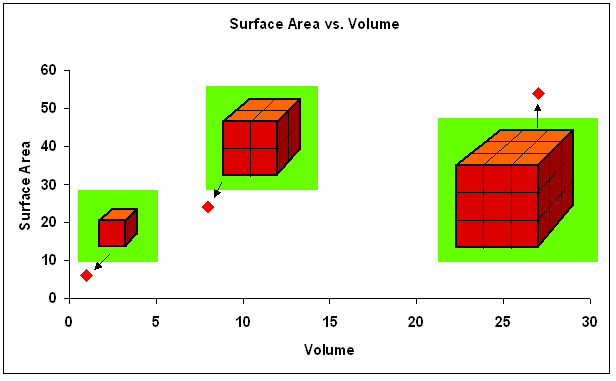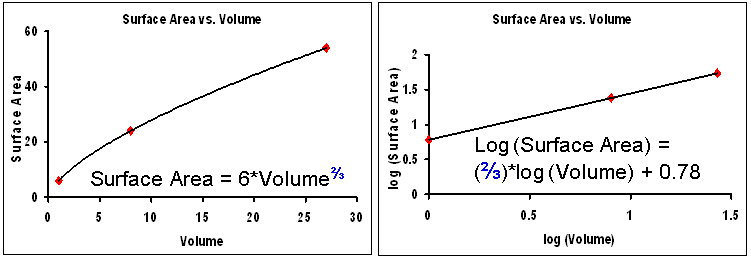The scaling of surface area to volume
OK, so surface area to volume ratios decrease with increasing size (at least for our cube creatures):
small cube medium cube
large cube length (cm) surface area (cm2) volume (cm3) surface area/volume ratio
To figure out how surface area scales to volume, we use our same, familiar power function:
Y = aXb only this time, our specific equation is:
Surface Area = a* Volume b
Then we plot the relationship:

To determine the values of "a" and "b", we "fit" the data to our equations:
(we're not going to go into the mathematics right now of how these equations are "fit", but will save that for another module!)
We went ahead and fit the functions for both the normal and log-transformed data - and you can see that the computed value for the parameter "b" is the same for both!
Power function
|
Log-transformed function
|
Y = aXb
|
log(Y) = b*log(X) + log(a)
|

|
|
COOL! Surface area scales to volume to the ⅔ power!
Copyright University of Maryland, 2007
You may link to this site for educational purposes.
Please do not copy without permission
requests/questions/feedback email: mathbench@umd.edu